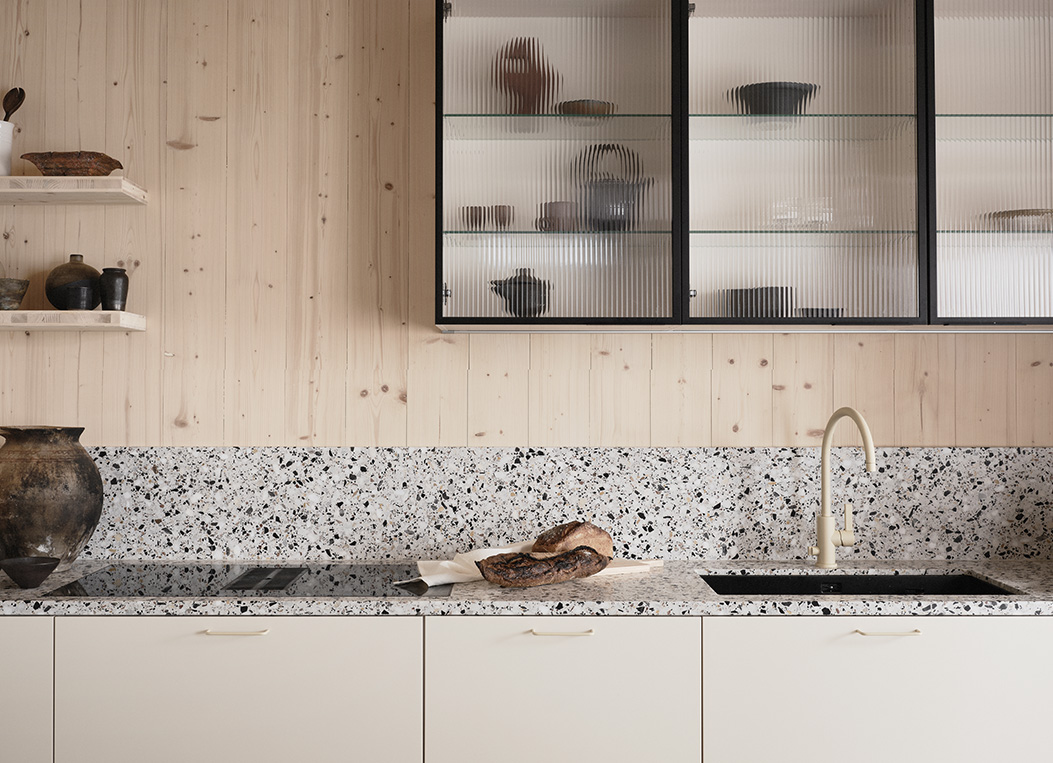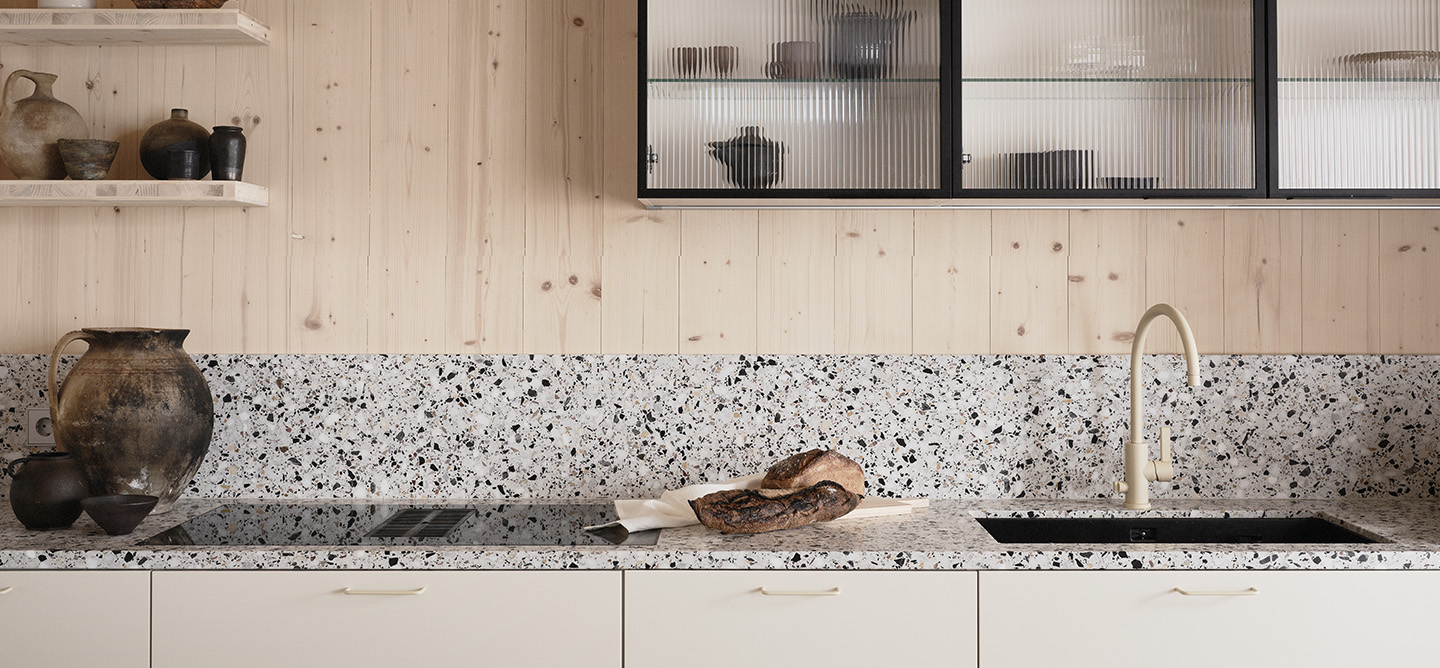
Let's start with the practical aspects, from top to bottom:
It is very common for upper cabinets where the hinge is placed at the top of the door, causing it to open upwards. To make it easier to open and close the door, we recommend placing the handle as shown in the sketch below.
Our recommendation is to either use a handle, an oval, or a shaped knob for the best grip.
For upper cabinets where the hinges are placed on the side of the door, we recommend placing the handle on the opposite side, as shown in the sketch below, to facilitate opening and clearly show how the cabinet should be opened.
Our recommendation is to either use a handle, an oval, or a shaped knob for the best grip.
For upper cabinets where the hinges are placed on the side of the door, we recommend placing the handle on the opposite side, as shown in the sketch below, to facilitate opening and clearly show how the cabinet should be opened.
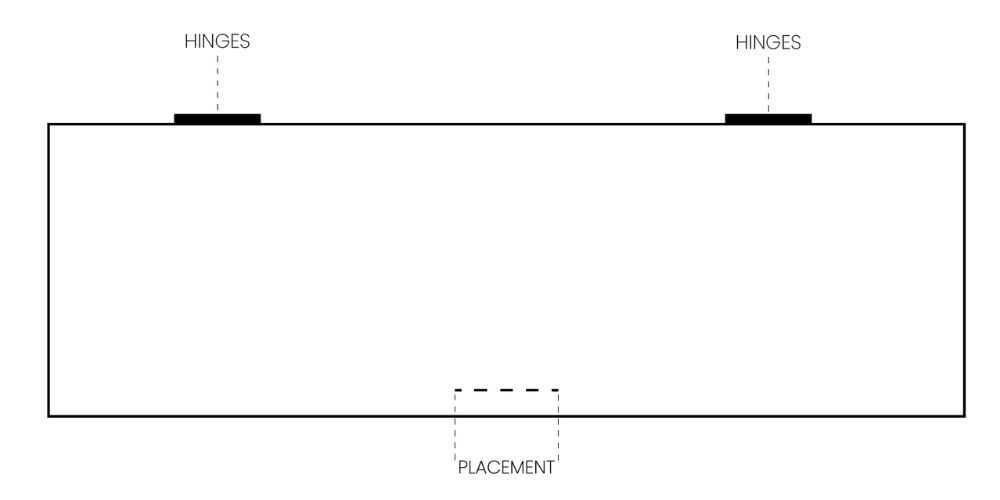
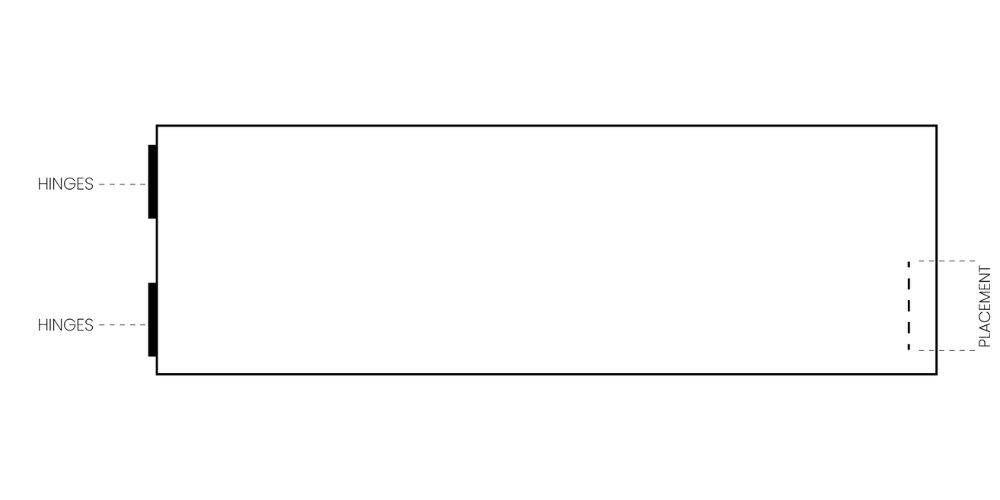
When it comes to the placement of handles on drawers, the handles are positioned as shown in the sketch below to indicate that it is a drawer that needs to be pulled out. For countertops with doors, the handle is placed vertically on the opposite side from the hinges. This is practical and quickly makes it clear that it is a door that needs to be opened and in which direction. See the sketch below.

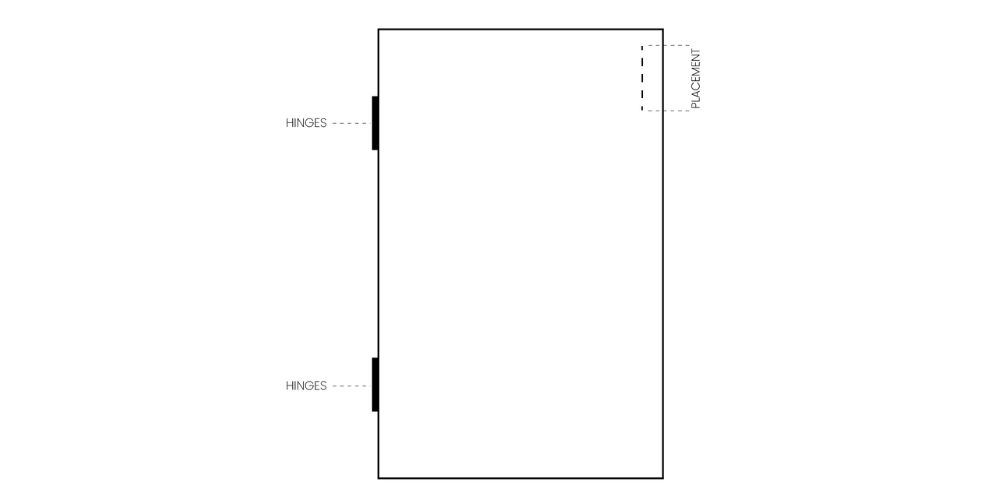
So, the practical rules of thumb are as follows:
On drawers, the handle is usually placed in the center, while on doors it is typically placed on the opposite side of the hinges. An exception is doors that open upwards, where the handle is placed in the middle of the door, at the edge, to make opening and closing easier. On upper cabinets, handles are placed at the bottom, and on countertops, they are placed at the top.
Stylish handles
Common dimensions for handles and knobs
To make choosing handles and knobs easier, we have decided to show the most common dimensions that come into play when purchasing handles and knobs! See the image and explanation below:
When purchasing handles, there are five different dimensions to consider, but the most common measurements are 1. C/C and 2. the length of the handle.
1. C/C: shows the dimension between the screw holes. This is particularly important if you are replacing handles on a piece of furniture that already has existing screw holes.
2. Length of the handle.
Dimension A: shows the depth of the handle, i.e., how far out from the door the handle extends when mounted.
Dimension A: shows the depth of the handle, i.e., how far out from the door the handle extends when mounted.
Dimension B: shows the thickness/width of the base of the handle.
Dimension C: is the length of the handle. - Total length of the handle.
Dimension D: shows the thickness of the handle.


When choosing knobs, there are three dimensions to consider. The most common measurements are the diameter of the knob and its depth.
Dimension A: illustrates the depth of the knob, i.e., how far from the door the knob will be positioned once mounted.
Dimension B: shows the base of the knob and its diameter. This is important to consider if you want to cover old holes with the new knob.
Dimension C: illustrates the diameter of the knob, i.e., the actual size of the knob.
Dimension A: illustrates the depth of the knob, i.e., how far from the door the knob will be positioned once mounted.
Dimension B: shows the base of the knob and its diameter. This is important to consider if you want to cover old holes with the new knob.
Dimension C: illustrates the diameter of the knob, i.e., the actual size of the knob.
Knobs for all styles
Placement on frame doors and frame drawers
Use the frame on doors and drawers as a guide for placing handles and knobs.
There are several different ways to use the frames. Some choose to place knobs and handles aligned with the bottom edge of the frame, while others choose to place knobs and handles at the right or left edge of the frame.
What we recommend is to use the same benchmark for all doors and drawers to create a cohesive look. One approach could be to maintain the same distance from the center of the hardware to the edge of the drawer or door as you do on other doors and drawers in, for example, the kitchen or bathroom.
To determine the distance from the bracket to the edge of the door or drawer, you can simply measure the thickness of the frame and place the bracket in the middle. This method can be used as a guideline for positioning the remaining hardware and will create a cohesive look for your kitchen or bathroom!
Placement on smooth doors and drawers
The question is how to determine the placement without having specific guidelines from the door and the drawers themselves. In this case, you will need to create your own guidelines!
One way to figure out where to place the bracket on the drawer or door is to take the smallest drawer front and place the bracket in the center. This will give you a measurement for the distance from the hardware to the edge, which works 9 out of 10 times for all doors and drawers! A tip if you want to get an idea of the placement is to lay the panels on the floor – this makes it easy to see how it looks before drilling.
Feel free to mix knobs with handles, handles of different lengths, handles of the same length, or knobs of the same diameter, or mix handles and knobs from the same series to create a cohesive look for your kitchen, creating a unique feeling and style! There is no right or wrong, and you decide how you want it in your kitchen.
If you are looking for a general size, handles and knobs are usually placed 1.5 - 2.5 cm from the edge of the drawer or cabinet.
One way to figure out where to place the bracket on the drawer or door is to take the smallest drawer front and place the bracket in the center. This will give you a measurement for the distance from the hardware to the edge, which works 9 out of 10 times for all doors and drawers! A tip if you want to get an idea of the placement is to lay the panels on the floor – this makes it easy to see how it looks before drilling.
Feel free to mix knobs with handles, handles of different lengths, handles of the same length, or knobs of the same diameter, or mix handles and knobs from the same series to create a cohesive look for your kitchen, creating a unique feeling and style! There is no right or wrong, and you decide how you want it in your kitchen.
If you are looking for a general size, handles and knobs are usually placed 1.5 - 2.5 cm from the edge of the drawer or cabinet.
Profile handles
Profile handles are becoming increasingly popular. We offer a variety of choices in different lengths, shapes, and designs. Some of our favorites can be seen in the images below. Profile handles are stylish and versatile for both doors and drawers; they are usually placed on the edge of the doors, either along the side or in the center of the drawers.Integrated appliances
If you have an integrated refrigerator, freezer, or dishwasher, we recommend using either handles, a T-shaped knob, or a slightly larger knob to make it easier to grip and open.If you have any questions or concerns, we are here to help and will be more than happy to assist you. Feel free to contact us if you need tips and advice from one of our product experts.
Good luck with placing your new interior details!
Good luck with placing your new interior details!

















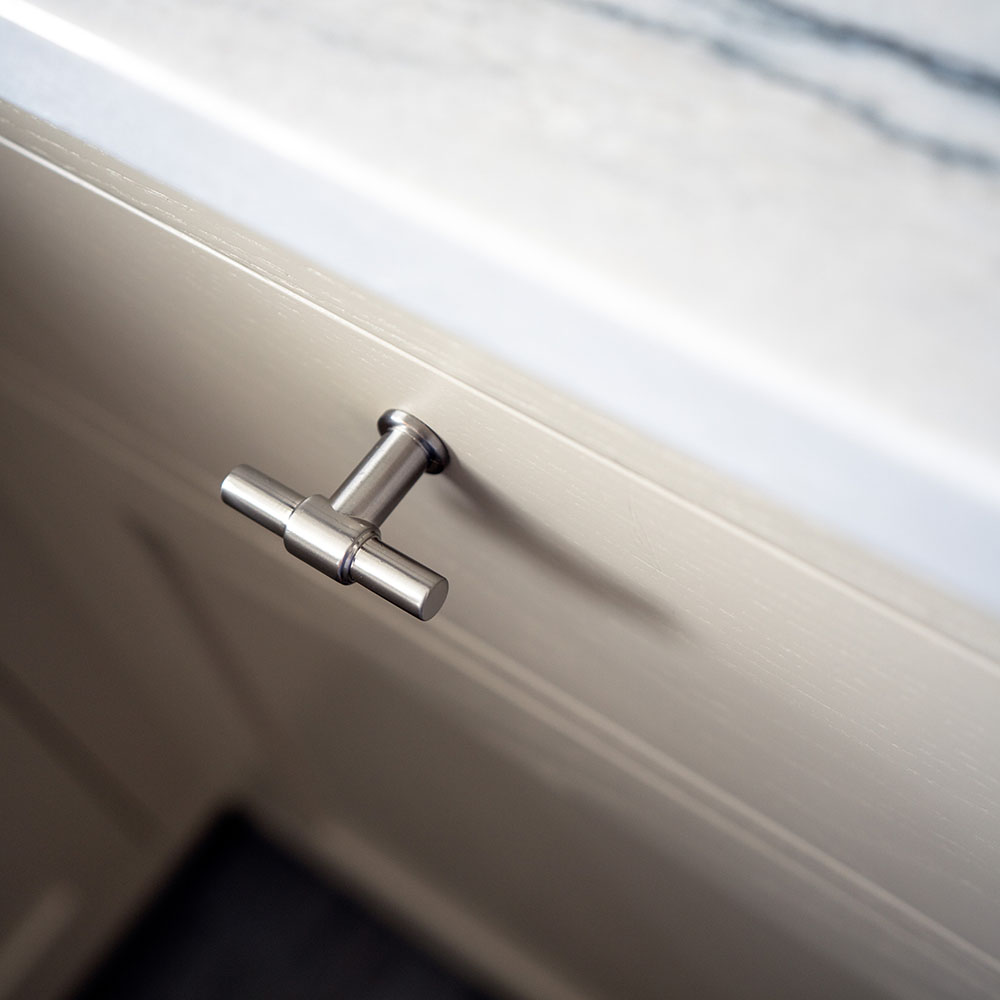




.jpg)












